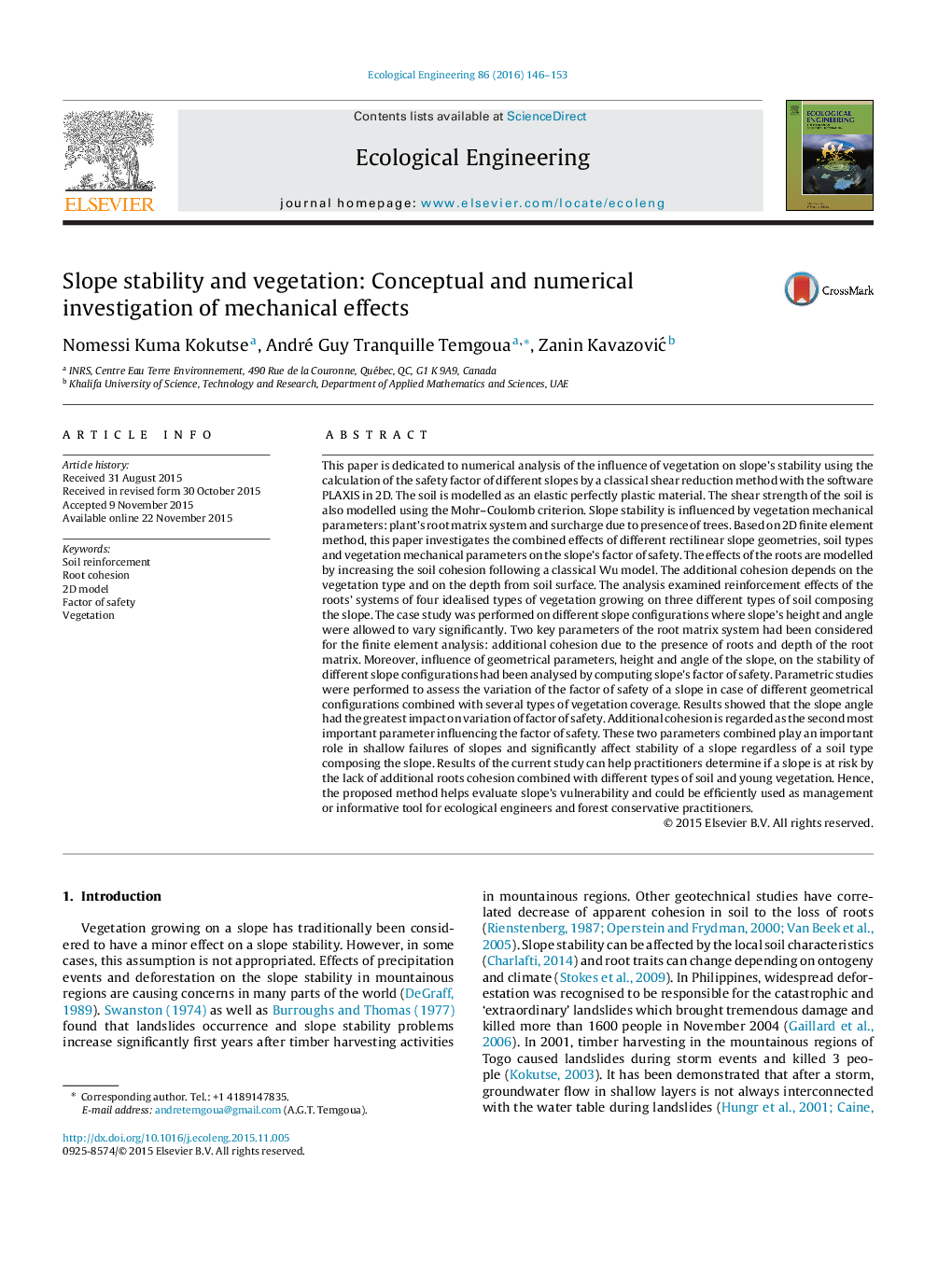| کد مقاله | کد نشریه | سال انتشار | مقاله انگلیسی | نسخه تمام متن |
|---|---|---|---|---|
| 4388925 | 1618013 | 2016 | 8 صفحه PDF | دانلود رایگان |
• This paper is dedicated to numerical analysis of the influence of vegetation on slope's stability using the calculation of the safety factor.
• Influences of different slopes, soil types and vegetation covers on the safety factor are examined using 2D finite element model.
• Results showed that the slope angle had the greatest impact on variation of factor of safety.
• Additional cohesion is regarded as the second most important parameter influencing the factor of safety..
• Results of the current study can help practitioners determine if a slope is at risk by the lack of additional roots cohesion combined with different types of soil and young vegetation.
This paper is dedicated to numerical analysis of the influence of vegetation on slope's stability using the calculation of the safety factor of different slopes by a classical shear reduction method with the software PLAXIS in 2D. The soil is modelled as an elastic perfectly plastic material. The shear strength of the soil is also modelled using the Mohr–Coulomb criterion. Slope stability is influenced by vegetation mechanical parameters: plant's root matrix system and surcharge due to presence of trees. Based on 2D finite element method, this paper investigates the combined effects of different rectilinear slope geometries, soil types and vegetation mechanical parameters on the slope's factor of safety. The effects of the roots are modelled by increasing the soil cohesion following a classical Wu model. The additional cohesion depends on the vegetation type and on the depth from soil surface. The analysis examined reinforcement effects of the roots’ systems of four idealised types of vegetation growing on three different types of soil composing the slope. The case study was performed on different slope configurations where slope's height and angle were allowed to vary significantly. Two key parameters of the root matrix system had been considered for the finite element analysis: additional cohesion due to the presence of roots and depth of the root matrix. Moreover, influence of geometrical parameters, height and angle of the slope, on the stability of different slope configurations had been analysed by computing slope's factor of safety. Parametric studies were performed to assess the variation of the factor of safety of a slope in case of different geometrical configurations combined with several types of vegetation coverage. Results showed that the slope angle had the greatest impact on variation of factor of safety. Additional cohesion is regarded as the second most important parameter influencing the factor of safety. These two parameters combined play an important role in shallow failures of slopes and significantly affect stability of a slope regardless of a soil type composing the slope. Results of the current study can help practitioners determine if a slope is at risk by the lack of additional roots cohesion combined with different types of soil and young vegetation. Hence, the proposed method helps evaluate slope's vulnerability and could be efficiently used as management or informative tool for ecological engineers and forest conservative practitioners.
Journal: Ecological Engineering - Volume 86, January 2016, Pages 146–153
